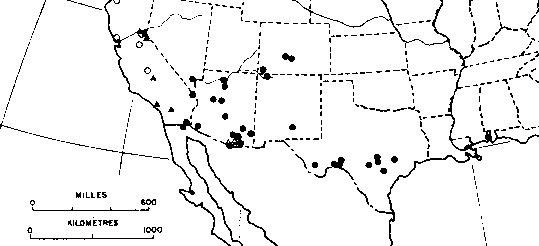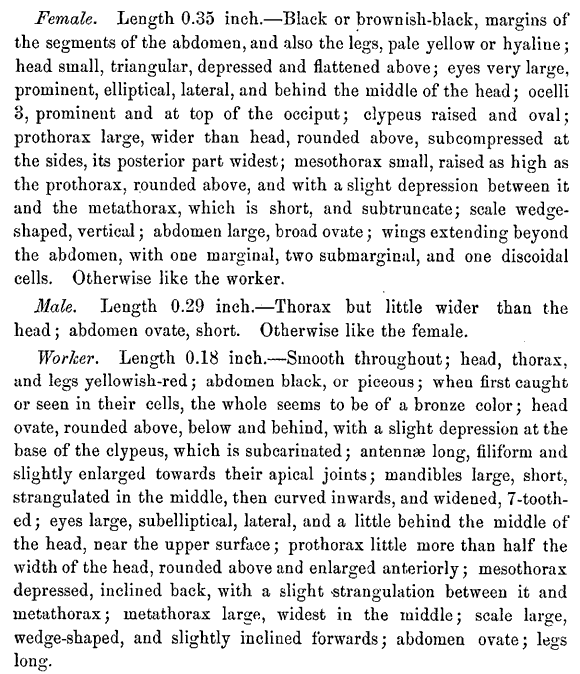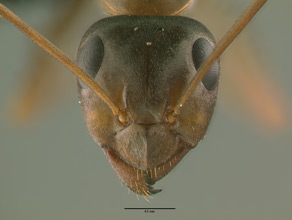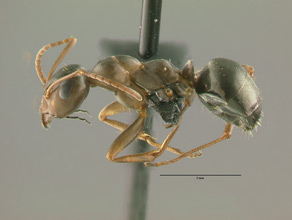- Identification
- A bicolored medium-sized ant; overall the body is dull, rather than reflective and shiny, with a gaster that is blackish brown to black. The remainder of the body is partially lighter colored and can vary from brown to reddish brown. The top of the head and alitrunk are especially notable as being lighter colored than the gaster.
- Biology
- Formica gnava generally occur within some of the hotter habitats (desert, semi-desert and open woods) within its range, while also avoiding the most arid microsites. It nests in the soil but galleries may be found under rocks or under other objects found on the surface of the ground.
- additional biology notes...
- Distribution
- Range
- United States and Mexico. Francoeur (1973)
This species occurs in seven southeastern states west United States: Arizona, California, Colorado, Nevada, New Mexico, Texas and Utah. It is also reported in Baja California of Mexico. It likely occurs in the eastern portion of the northern half of Mexico.
- The map below is from Francoeur (1973) and shows sampled occurrences of Formica gnava (filled circles).
- Navajo Reservation Records
- Specimens being processed.

- Additional Notes
- W.M. Wheeler (1902), reporting on behavioral notes taken by Buckley, states the following about Formica gnava workers: "very active and brave; bites sharply, and emits a strong odor of formic acid."
- Species from the Formica fusca group are some of the most heavily parasitized ants in North America. Other Formica and Polyergus species exploit fusca group species by enslaving their workers or through new queens parasitizing existing colonies to start their new colonies. The former occurs as the result of brood raids that have the exploitive species infiltrating a nest and carrying off both larvae and pupae. The latter occurs through a newly-mated foreign queen entering a fusca species nest, killing the queen and tricking the workers of the dequeened nest into raising her brood. Through time the fusca workforce is replaced by workers off the new species.

- Literature
- Buckley, S. B. 1866. Descriptions of new species of North American Formicidae. Proceedings of the Entomological Society of Philadelphia. 6:152-172.
- Francoeur, A. 1973. Révision taxonomique des espèces néarctiques du groupe fusca, genre Formica (Formicidae, Hymenoptera). Mémoires de la Société Entomologique du Québec. 3:1-316.
- Wheeler, W. M. 1902. A consideration of S. B. Buckley's "North American Formicidae". Transactions of the Texas Academy of Sciences. 4:17-31.
- A note about these publications. The literature cited here is not meant to be an exhaustive list of papers published about this species.
Page authored by David Lubertazzi and Gary Alpert


